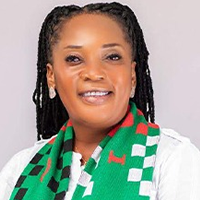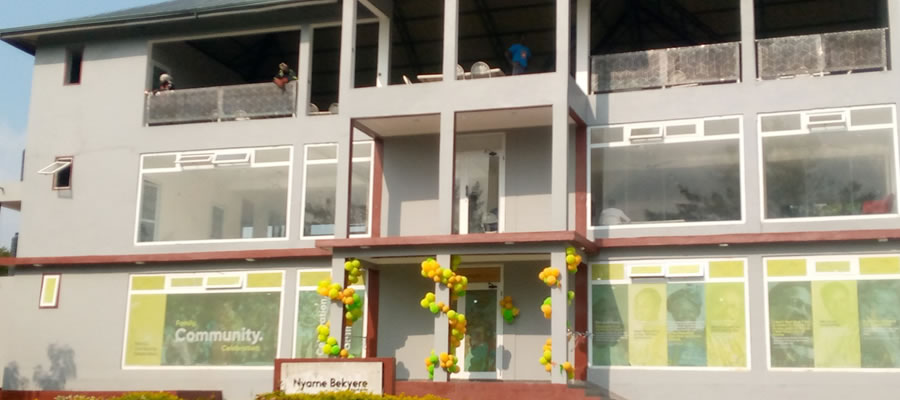
Economic Activity status refers to economic or non-economic activity of respondents during the 7 days preceding census. Information on type of activity was collected on persons 5 years and older. On the average, a little less than 3 out of every 4 persons (73.0%) aged 15 years and older are economically active in the Eastern Region. The activity rate in the region is relatively high but disparities exist among the districts, with a few recording far higher rates than the regional average.
Economic Activity Status by District
Generally, the economic activity rates of all the municipalities are lower than the regional average. As can be observed the economic activity rates for all the municipalities are below 70 percent, with the exception of Kwahu West Municipality which recorded a rate of 70.9 percent. New Juaben South Municipality, the most urbanized district where the Regional capital Koforidua is located recorded the lowest economic activity rate of 67.1 percent. The highest economic activity rates are recorded in the least urbanized districts in Upper Manya (83.0%) and Kwahu Afram Plsind North (85.8%).
The patterns of economic activity rate suggest that predominantly rural populations report higher economic activity rates because greater employment opportunities exist in their agricultural sector compared to the declining economy.
Economic Activity Status by Sex
Differences exist between the sexes regarding their economic activity rate in all the districts, with the economic activity rates of the males higher than that of the females in almost all the districts. With the exception of Lower Manya Krobo District where the economic activity rates are the same for males and females and in Akyem Manso District where they are about the same, females have higher economic activity rates than the males in the Akuapim South Municipality.
Females in Ghana generally perform household chores even from early childhood. Consequently, some become housewives who may not engage in any economic activity probably because they may not be willing or available to do so. While housewives are not paid for performing household chores, domestic employees on the other hand are usually paid for performing similar tasks. They are, therefore, enumerated at censuses and surveys as economically inactive. As a result the economic activity rate is consistently lower among females than males in Ghana, and consequently, in the Eastern Region.
Economic Activity Status by Locality
In all the districts, the economic activity rates of rural areas are higher than those of urban areas. There are no exceptions to this pattern. The economic activity rates for rural areas range from 60.1 percent in Akuapem North to 74.7 percent in Upper Manya Krobo while the range in urban areas is from 70.3 percent, also in Akuapem North to 88.8 percent in Kwahu Afram Plains North. Thus economic activity rates in rural areas in all the districts exceed 70 percent while those of urban areas are mostly below 70 percent. Even though higher school attendance rate among young people in urban areas compared to their counterparts in rural areas may account for lower economic activity rates in urban areas, it is also possible that economic opportunities are lower in the urban areas even as reduced job opportunities have characterized the economic sectors of urban populations in Ghana in recent times.
Economic Activity Status by Age
The lowest rates are recorded by the youngest age group (15- 24 years), followed by the oldest (60 years and older). Since school attendance is highest among those aged 15- 24 years, some persons within this age group are not yet economically active. Some of the aged may choose to be economically inactive. It must be noted that the economic activity rate among the aged (60+ years) is relatively high in all the districts. The age group 35- 59 years reported the highest economic activity status, exceeding 90 percent in all the districts, with the exception of Akuapem South municipality and Akwapem North. Almost all persons aged 35- 59 years are economically active in Suhum (95.1%), Kwahu Afram Plains North (96.5%) and Upper Manya Krobo (97.1%). Upper Manya Krobo recorded the highest economic activity rate for all the age groups. It reported as high as 61.3 percent the 15-24 years age group while those for most districts are far below 50 percent.
Employment Status
The employment status of the population is an indication of the engagement of the population in economic activity, whether employed or unemployed. It is important for planning and monitoring of economic policies that seek to address unemployment in a population. The results of the analysis of the census data show that a little more than two thirds (69%) of the population in the Eastern Region was employed while 4.1 percent were unemployed. The rest (27.3%) were not economically active.
Employment Status by District
Levels of employment and unemployment vary considerably among the districts in the region. Employment rates range from 60.7 percent in Akuapem North to 83.9 percent in Kwahu Afram Plains North. Upper Manya Krobo recorded the lowest rate of unemployment (1.2 percent), while Lower Manya Krobo had the highest rate of 6.4 percent. Nine out of the 22 districts recorded employment rates above the regional average. Upper Manya Krobo Muniicipal (and Kwahu Afram Plains North District recorded employment rates above 80 percent.
Generally, the rate of unemployment is higher in the less urbanized districts. They also recorded the highest employment rates. These are indications that unemployment is characteristic of urban populations. The New Juaben South Municipal where the capital of the Municipality (Koforidua) is located recorded the third highest unemployment rate of 5.5 percent; and the rate exceeded 4.0 percent in all the municipalities, except in Kwahu West Municipal where it was 3.8 percent.
Employment Status by Age
Employment rate is relatively high in the region, with an average of 94.3 percent for the Region. Differences exist among the age categories. The rate increases with age and ranges from 85.0 percent for the youth (15-24 years) to 98.0 percent for those aged 35- 59 years. The employment rate of the aged (60+ years) is higher than that of the youth. Youth unemployment and increasingly graduate unemployment has become a topical issue in Ghana.
Unemployment
To a very large extent, the unemployment rate of a population attracts the attention of policy makers more than other economic characteristics. This is because of the wellbeing issues that are associated with it. Usually, rates around 10 percent are considered to be very high. But in low income countries such as Ghana where standards of living are already low, unemployment rates between 5 and 10 percent are deemed high.
Unemployment by District
The average level of unemployment in the Eastern Region recorded at the census was 4.1 percent. The levels in the various districts however vary. The lowest level was 1.2 percent in Upper Manya Krobo while the highest, 6.4 percent, was recorded in Lower Manya Krobo Municipal. Apart from New Juaben South, Akuapem South, Yilo Krobo, Lower Manya Krobo, Asuogyaman and Fanteakwa North where the rates are 5 or 6 percent, the rest recorded rates that are 4 percent or lower.
Unemployment by Sex
Overall, the female population in all the districts reported higher rates of unemployment than their male. As indicated in an earlier section, the generally lower educational status of females may account for their higher unemployment rate. There are only four districts in which males recorded a higher or the same unemployment rates as the females: Birim North (3.7%) for males and for females, Upper Manya Krobo (1.0%) for males and for females, Asuogyaman (5.0%) for males and 4.6 % for females) and New Juaben South Municipality (5.1% for males and 4.6% for females).
Unemployment by Age
Differentials in unemployment rate exist among the age categories in all the districts, the highest rates are recorded by the youth, aged 15 to 24 years. The rates are in excess of 5 percent in almost all the districts, except Atiwa West 4.3%) and Kwahu Afram Plains North (2.9%). The rates are highest, (approximately 10 percent) among the youth in Akwapim South Municipal and Akuapem North. The levels of unemployment among the ages 25- 34 years are the next highest. The level of unemployment decreases with increasing age in all the districts. This shows that the youth face unemployment problems than older age groups.
Unemployment by Locality
Rural-urban differentials in unemployment rates are recorded in all the districts in the region. The level of unemployment is higher in the urban areas than in the rural areas in all the Districts as indicated in Table 9.9. The unemployment rates for the urban populations range from 2.5 percent (Upper Manya) to 8.1 percent (Akuapem North). Upper Manya Krobo District recorded the lowest rate of unemployment (1.1%) for rural areas while the highest rate of 5.4 percent was for Abuakwa South (formerly East Akim) Municipality.
It must be noted, however, that higher school enrollment rates in urban areas and the municipalities, than in the rural communities of the least urbanized districts, also account for economic inactivity among a larger proportion of young persons aged 18- 24 years in the Municipalities.
Date Created : 10/13/2023 12:00:00 AM












 facebook
facebook
 twitter
twitter
 Youtube
Youtube
 +233 593 831 280
+233 593 831 280 0800 430 430
0800 430 430 GPS: GE-231-4383
GPS: GE-231-4383 info@ghanadistricts.com
info@ghanadistricts.com Box GP1044, Accra, Ghana
Box GP1044, Accra, Ghana